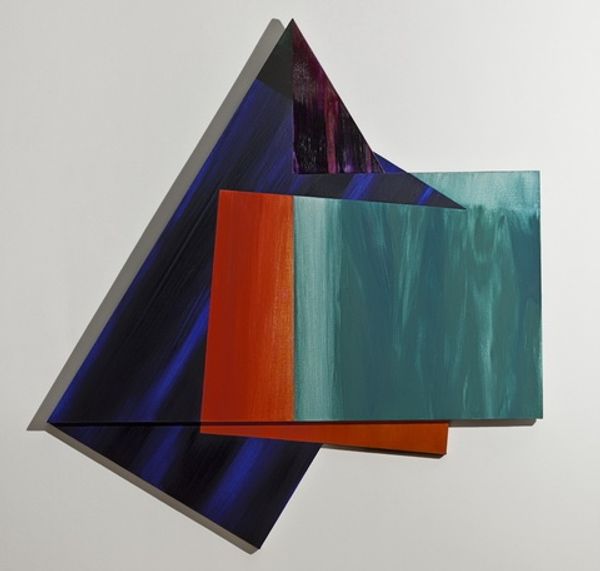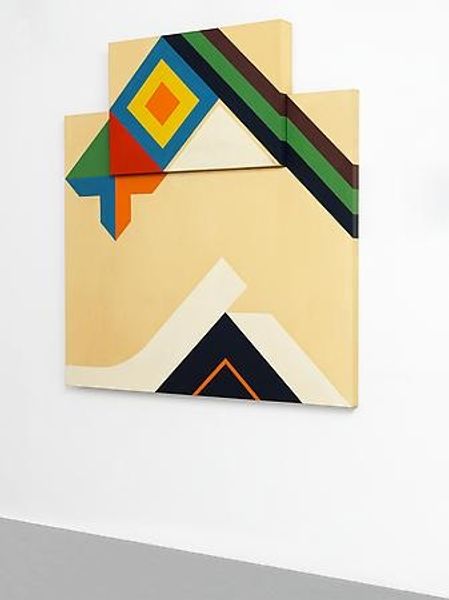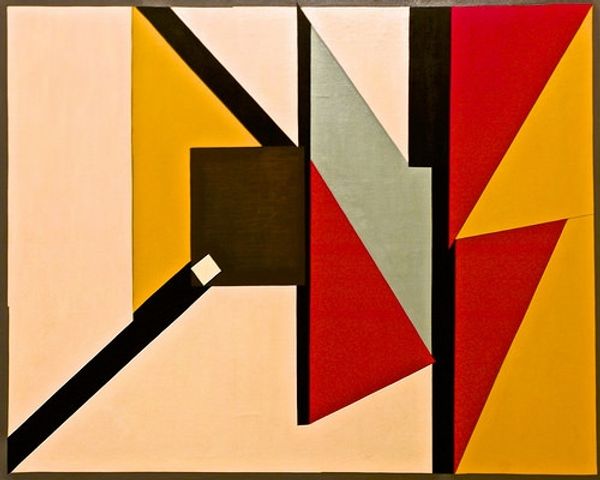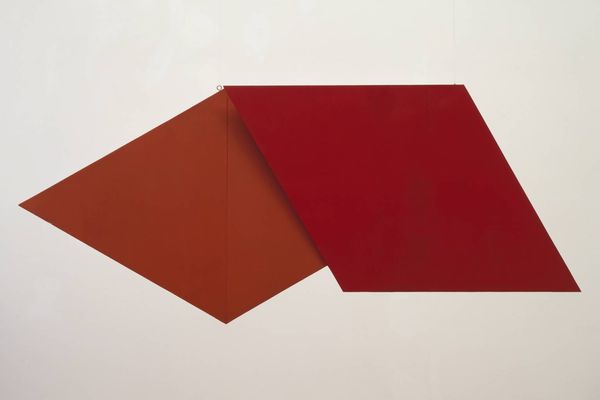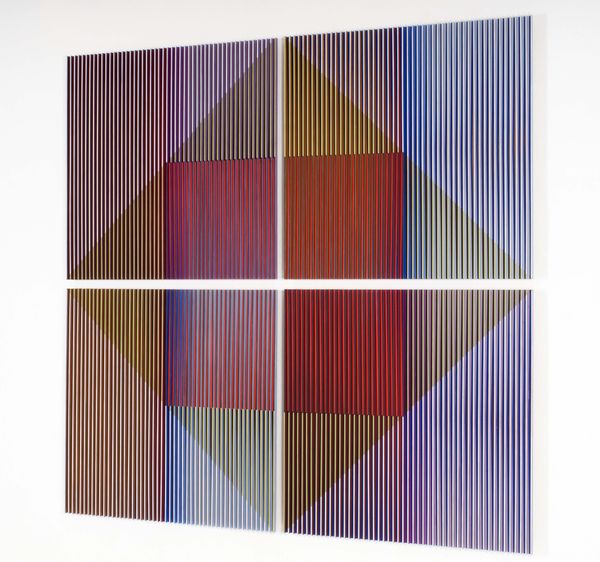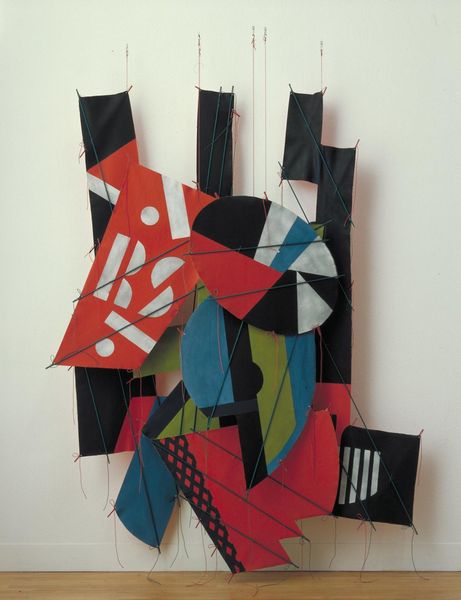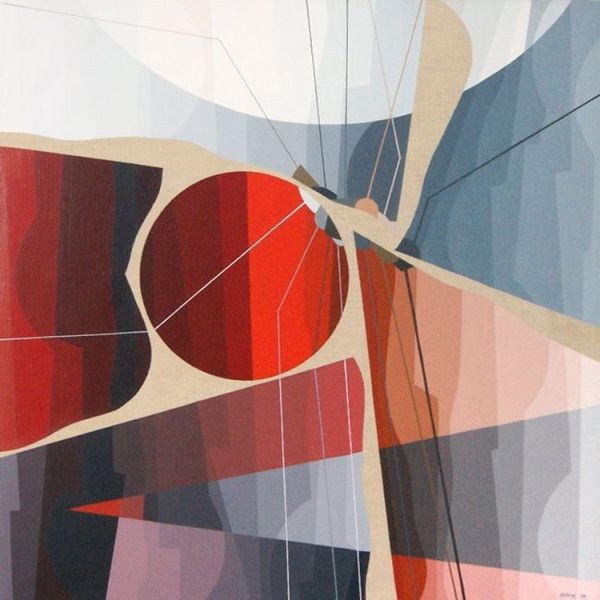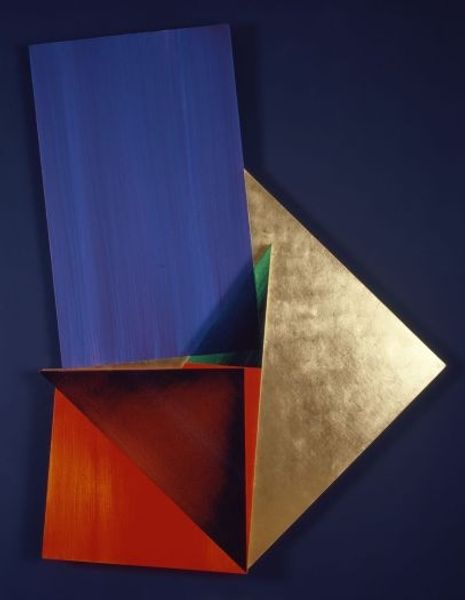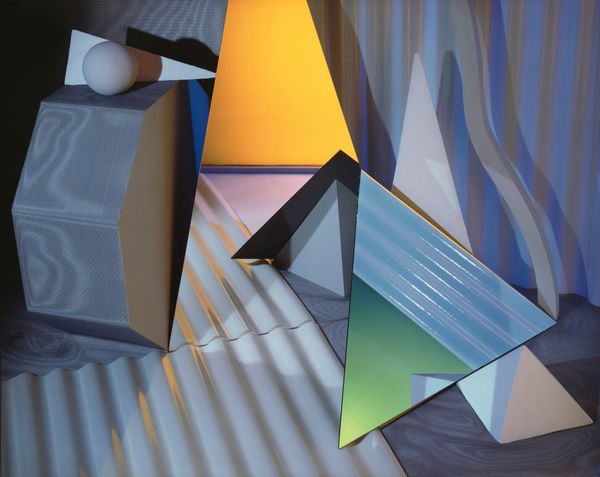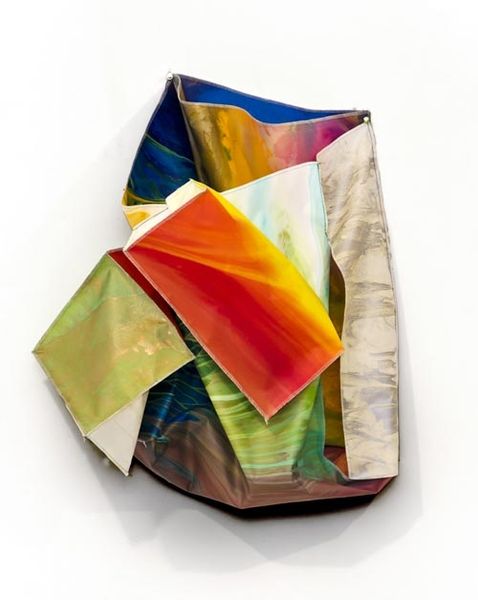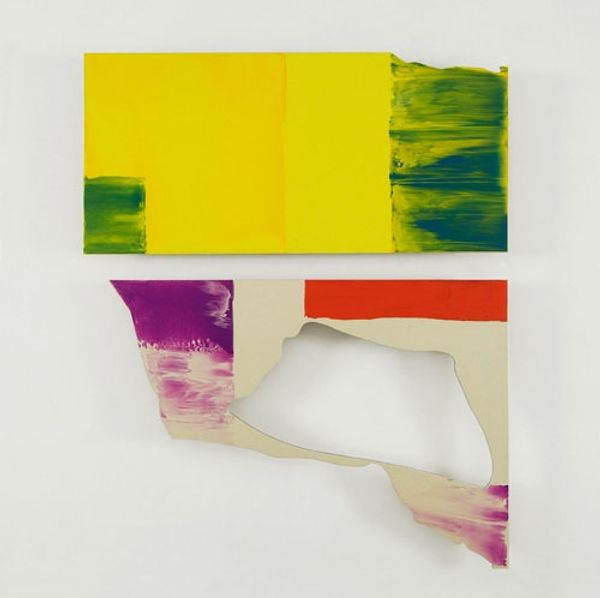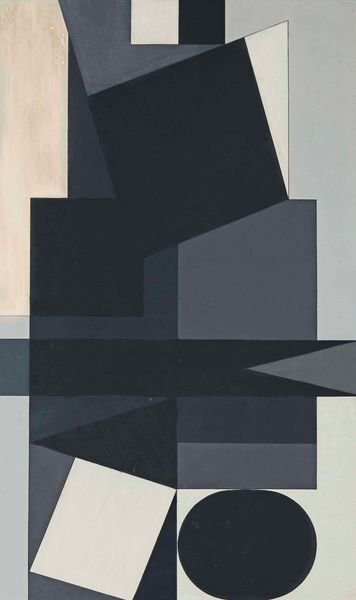
acrylic-paint
#
acrylic
#
postminimalism
#
acrylic-paint
#
abstract
#
geometric
#
line
Copyright: Dorothea Rockburne,Fair Use
Curator: What grabs me first is the slightly off-kilter geometry. It feels unstable but intriguing, like a Rubik's Cube just before you solve it. Editor: This is "Narcissus" by Dorothea Rockburne, created in 1985 using acrylic paint. What's compelling about Rockburne's practice, as you can probably see here, is how she blends minimalism with a really nuanced engagement with materials. It's a bit postminimalist actually. Curator: Absolutely. Looking closer, those planes of colour aren't flat, are they? There’s depth, a subtle layering of the paint that feels almost…organic against the hard edges. It gives these cool, sharp forms an undercurrent of vulnerability. Editor: Well, the mythological Narcissus was both beautiful and tragically self-absorbed, so the tension you are perceiving seems to match that persona and Rockburne was really diving into mathematics and philosophy when she was making this kind of piece, the symbolism would definitely have been on her mind. Curator: So the geometric shapes start to seem more about a breakdown of form, maybe even an undoing, and a self-undoing at that! Which gets us right back to Narcissus and the hazards of unchecked self-regard. I keep getting pulled in by those intersecting planes and chromatic fields – are there some colours reflected off each other? Editor: Indeed there are. Those reflected tones contribute to its complexity. There are very precise choices in play that have that visual effect, adding layers of depth and conceptual rigor. That tension makes the name all the more perfect; it is a shattered mirror reflecting only itself. Curator: Exactly. The colours feel both earthy and somehow ethereal. There's a sense of something ancient being reinterpreted in a very modern, almost clinical way. Editor: And the brushstrokes have a painterly quality that I initially missed because of the geometry. Even her brushstrokes manage to embody that complexity. Curator: So ultimately this seemingly formal exercise turns into something deeply evocative about self-image, reflection, and maybe even a bit of self-deception. Editor: Beautifully put. It demonstrates how seemingly opposing concepts - geometry and emotion - can be united in an incredibly moving visual language.
Comments
No comments
Be the first to comment and join the conversation on the ultimate creative platform.
